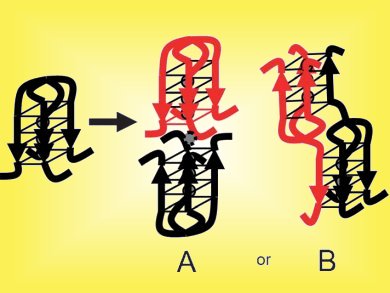Quadruplex motifs could act as topological switches for the regulation of gene expression. DNA G-quadruplexes can be formed, for example, in telomeres, oncogenic promoter elements, or 5′-untranslated regions (UTR) of mRNA and are therefore potential targets for drug design.
Ramon Eritja, Biomedical Research Networking Center in Bioengineering, Biomaterials and Nanomedicine (CIBER-BBN), Spain, and colleagues used the trebler phosphoramidite as a tetralinker for the preparation of end-attached quadruplexes. The usage of this tetralinker allowed the modification of only one of the four strands. This was achieved by first synthesizing the modified strand, then attaching the trebler branching unit, followed by simultaneous synthesis of the other three strands. Very stable quadruplexes were formed using the tetrameric [d(TG4T)]4 parallel quadruplex as a model.
In addition to the two possible all-parallel quadruplexes, a quadruplex containing one strand with an antiparallel orientation (3+1) and two quadruplexes with an 8-aminoguanine substitution on one of the strands were synthesized. Their structures were analyzed and their stabilities compared.
Image: © Wiley-VCH
- Synthesis and Structural Characterization of Stable Branched DNA G-Quadruplexes Using the Trebler Phosphoramidite,
R. Ferreira, M. Alvira, A. Aviñó, I. Gómez-Pinto, C. González, V. Gabelica, R. Eritja,
ChemistryOpen 2012, 1(2), 106–114.
DOI: 10.1002/open.201200009
ChemistryOpen – the first society-owned, open-access, chemistry journal – is a journal of ChemPubSoc Europe published by Wiley-VCH.



